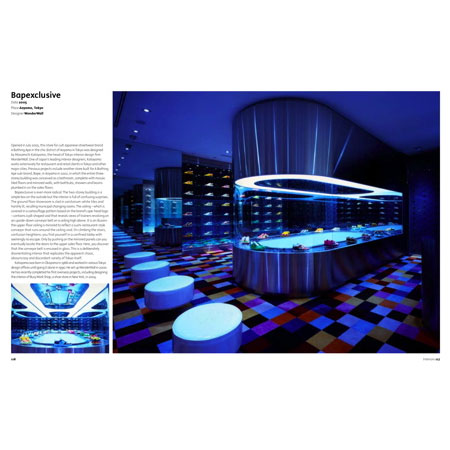A new feature on dezeen: an occasional series of profiles of key designs from the twenty-first century, starting with Wonderwall's Bapexclusive store in Aoyama, Tokyo.
Text and images are taken from Twenty-First Century Design, published by Carlton Books and written by dezeen editor Marcus Fairs.
Bapexclusive
Date 2005
Place Aoyama, Tokyo
Designer WonderWall
Opened in July 2005, this store for cult Japanese streetwear brand A Bathing Ape in the chic district of Aoyama in Tokyo was designed by Masamichi Katayama, the head of Tokyo interior design firm WonderWall.
One of Japan’s leading interior designers, Katayama works extensively for restaurant and retail clients in Tokyo and other major cities. Previous projects include another store built for A Bathing Ape sub-brand, Bape, in Aoyama in 2002, in which the entire three-storey building was conceived as a bathroom, complete with mosaic tiled floors and mirrored walls, with bathtubs, showers and basins plumbed in on the sales floors.
Bapexclusive is even more radical. The two-storey building is a simple box on the outside but the interior is full of confusing surprises. The ground floor showroom is clad in sanitorium-white tiles and harshly lit, recalling municipal changing rooms.
The ceiling – which is covered in a camouflage pattern based on the brand’s ape-head logo – contains a pill-shaped void that reveals views of trainers revolving on an upside-down conveyor belt on a ceiling high above.
It is an illusion: the upper-floor ceiling is mirrored to reflect a sushi-restaurant-style conveyor that runs around the ceiling void.
On climbing the stairs, confusion heightens: you find yourself in a confined lobby with seemingly no escape. Only by pushing on the mirrored panels can you eventually locate the doors to the upper sales floor.
Here, you discover that the conveyor belt is encased in glass. This is a deliberately disorientating interior that replicates the apparent chaos, idiosyncrasy and discordant variety of Tokyo itself.
Katayama was born in Okayama in 1966 and worked in various Tokyo design offices until going it alone in 1990. He set up WonderWall in 2000.
He has recently completed his first overseas projects, including designing the interior of Busy Work Shop, a shoe store in New York, in 2004.
Text: copyright Marcus Fairs 2006
Buy this book at the Dezeenbooks store
(in association with amazon.co.uk)

